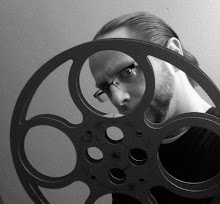In the 1970’s, one of the most popular genres in cinema was
the disaster flick, in which everyday people were faced with insurmountable
odds in surviving real-world disasters; ranging from air travel (AIRPORT),
high-rise fires (THE TOWERING INFERNO) and ships at sea (THE POSEIDON
ADVENTURE). Today, Hollywood is quick to jump on the latest catastrophe, which
brings us to Peter Berg’s DEEPWATER HORIZON; the true story of the oil rig
which exploded in 2010…killing 11 people and spewing millions of gallons of oil
into the ocean.
The oil-exploratory rig Deepwater
Horizon, just 41 miles off the coast of Louisiana, is 43 days behind
schedule and millions of dollars over-budget. The chief tech Mike Williams
(Mark Wahlberg), crew leader Mr. Jimmy (Kurt Russell) and officer Andrea
Fleytas (Gina Rodriguez), try to keep things together despite being pushed by
BP Oil representative Donald Vidrine (John Malkovich) to keep drilling despite
the eminent danger.
DEEPWATER HORIZON is very much inspired by the disaster-film
template from the 1970’s, where characters are introduced, fleshed-out, and
then thrown into some sort of large-scale deadly situation which is caused by
some greedy bastard trying to make a few million bucks. At the center of this
is Mike Williams, who only wants do his job and go home to his loving wife and
family (with the wife brilliantly played by Kate Hudson). There’s a lot of
blue-collar vs. white-collar going on here, as Mike and Mr. Jimmy constantly
bang heads with the management types concerning the problems with the rig.
Offshore exploratory drilling is not easy to explain, and
director Peter Berg uses nearly the entire first act in explaining how it works…using
the constant arguing between the workers and management as a tool to accomplish
this. A lot of the technical jargon comes off as Ancient Greek, but many exceffective
ellent visuals are presented to help the audience along. It sounds dull, but
once the troubles start, it pays off.
The lead-up to those troubles is a wonderful build, and the
atmosphere of tension and dread hangs heavy over the film. Once things go south
and oil blows everywhere leading to one hell of a KABOOM, Peter Berg’s film shifts into high gear. The story goes
into survival mode with characters trying to evade the flames, save their
fellow workers, and keep the rig from blowing more oil into the ocean. The
situations the characters find themselves on the burning rig are harrowing and the film is loaded with
plenty of holy shit moments. The
visuals are stunning, Steve Jablonsky’s score adds to the power of it, and as
tragic as the story is, DEEPWATER HORIZON is an eye-popping heart-stopper.
With so much spectacle going on, characters become even more
important, and Berg does not drop the ball in getting great performances out of
his cast. Mark Wahlberg is fantastic, going through a lot of physical work and
showing every bit of needed emotion. Kurt Russell is equally great, and his
scenes facing off with John Malkovich are a treat.
With all of the exploding and burning going on, Berg never
fails to keep this as a family story, and Mike getting home to his wife and
child serves as the emotional punch at the finale which is promised to bring a
hefty amount of tears. And just as a parting gift, Berg adds in a nice tribute
to the men who lost their lives on that night…making DEEPWATER HORIZON a proper
historical drama. This is by far Berg’s finest film; a perfect balance of
spectacle and triumph of the human spirit.
BOTTOM LINE: See it












